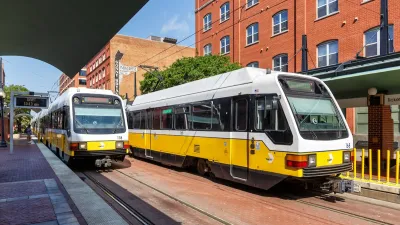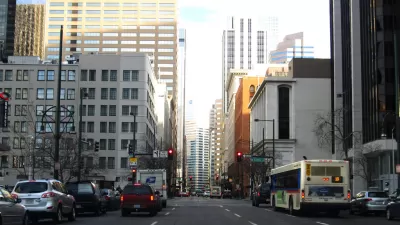The United States has a long and insidious history of erecting structures to control the movements of African Americans in urban and suburban spaces.

Chat Travieso writes about the history of walls and other barriers—fences, barricades, buffer strips—that have been used to segregate communities in cities across the country. "Under pretexts of traffic control, crime prevention, and protection of property values, municipalities from Florida to New York to California continue, into the present century, to block streets along Black-white neighborhood borders — and in so doing to further harden racial divisions, facilitate police intimidation, and force Black residents to take circuitous routes to get to work and school and to fulfill other daily needs."
Travieso has been mapping and documenting these representations of racial inequality manifested in the built environment. He recounts the histories of these structures, many of which still exist in some form, and their long-term impacts:
In Melbourne, Florida, a half-mile concrete wall separating the predominantly white Sunwood Park from the majority African-American Booker T. Washington area continues to block a direct path to the elementary school. The developer of Sunwood Park built the wall in 1959 in opposition to the county’s plan to construct a public-housing project. But, as I was told in 2019 by a community member named Pauline Clark, "to this day, no school buses come around here."
Private developers, civic authorities, and white homeowners were all complicit in using these barriers to segregate and disenfranchise African Americans. While their removal is one response, some communities have chosen to acknowledge the barriers as relics of racism and to reclaim the past through plaques, murals, and historic designations, says Travieso.
FULL STORY: A Nation of Walls

Study: Maui’s Plan to Convert Vacation Rentals to Long-Term Housing Could Cause Nearly $1 Billion Economic Loss
The plan would reduce visitor accommodation by 25,% resulting in 1,900 jobs lost.

Alabama: Trump Terminates Settlements for Black Communities Harmed By Raw Sewage
Trump deemed the landmark civil rights agreement “illegal DEI and environmental justice policy.”

North Texas Transit Leaders Tout Benefits of TOD for Growing Region
At a summit focused on transit-oriented development, policymakers discussed how North Texas’ expanded light rail system can serve as a tool for economic growth.

Nevada Bills Aim to Establish Home Insurance Assurance Amidst Wildfire Risk
Republican sponsor hopes the FAIR plan would be “a true market of last resort.”

Virginia Law Allows Judges to Mandate Speed Limiters
The law could set a new precedent for speed limiting tech on U.S. vehicles.

Comment: EPA Cuts will Send Atlanta Back to Eye-burning Ozone, Lung-damaging Smog, and Raw Sewage in the Chattahoochee River
A veteran political journalist takes stock of the hard-earned ground Georgia stands to lose with slashed environmental protection.
Urban Design for Planners 1: Software Tools
This six-course series explores essential urban design concepts using open source software and equips planners with the tools they need to participate fully in the urban design process.
Planning for Universal Design
Learn the tools for implementing Universal Design in planning regulations.
City of Santa Clarita
Ascent Environmental
Institute for Housing and Urban Development Studies (IHS)
City of Grandview
Harvard GSD Executive Education
Toledo-Lucas County Plan Commissions
Salt Lake City
NYU Wagner Graduate School of Public Service





























